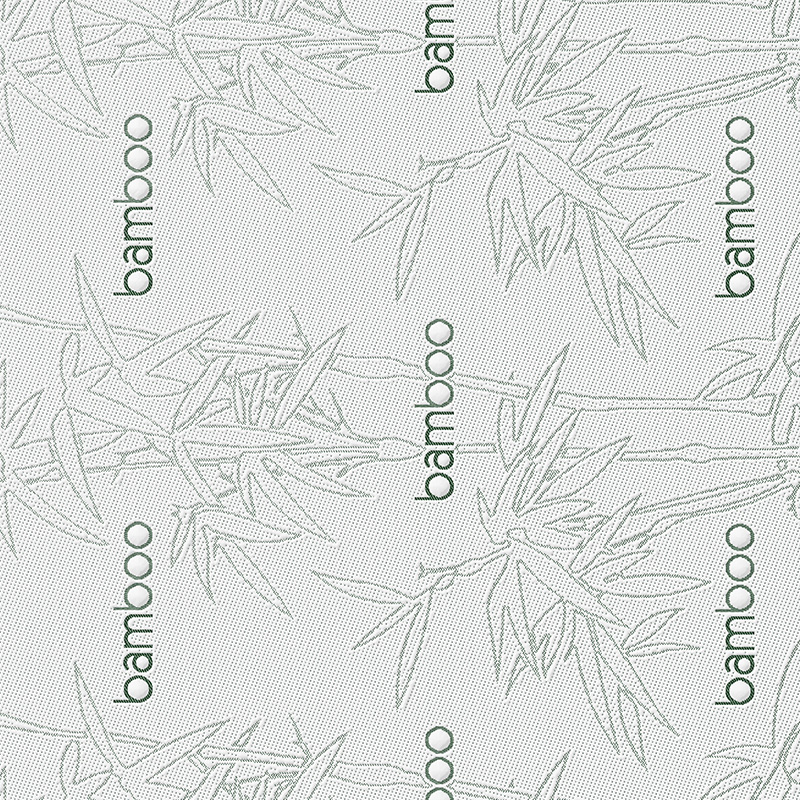The Production Process of Bamboo Knitted Fabric
Bamboo knitted fabric is derived from bamboo pulp, which is transformed into fibers through a series of processes. The production begins by crushing the bamboo stalks into pulp. This pulp is then processed to create bamboo fibers, which are spun into yarn. The yarn is knitted into fabric using traditional knitting techniques, resulting in a soft, breathable material. There are two primary methods for producing bamboo fabric: the mechanical process, which is more environmentally friendly but labor-intensive, and the chemical process, which involves solvents to break down the bamboo fibers.
Eco-Friendly Nature of Bamboo Fabric
One of the most compelling reasons for the rise in bamboo fabric’s popularity is its sustainability. Bamboo is a rapidly renewable resource, growing much faster than traditional materials like cotton. It requires minimal water, pesticides, or fertilizers to grow, making it an eco-friendly alternative to other fibers. Additionally, bamboo plants help reduce carbon dioxide in the atmosphere, contributing to environmental conservation. For consumers and manufacturers alike, bamboo knitted fabric represents a responsible choice for reducing the environmental footprint of textile production.
Superior Comfort and Softness
Bamboo knitted fabric is known for its luxuriously soft texture. It rivals some of the finest fabrics like silk and cashmere in terms of smoothness, making it ideal for clothing that comes into direct contact with the skin. Whether it’s for T-shirts, underwear, or baby clothes, the fabric’s gentle touch is perfect for sensitive skin types. Bamboo fabric also has hypoallergenic properties, reducing the likelihood of skin irritation or allergies, further enhancing its appeal in the world of fashion and textiles.

Breathability and Moisture-Wicking Properties
One of the standout features of bamboo knitted fabric is its breathability. The fabric’s porous structure allows for excellent air circulation, which helps regulate body temperature. In warm weather, bamboo fabric keeps the body cool by allowing heat to escape, while in colder temperatures, it provides warmth by trapping body heat. In addition, bamboo fabric is highly absorbent, capable of wicking moisture away from the skin. This makes it a great choice for activewear and bedding, ensuring comfort even in high-humidity environments.
Antibacterial and Odor-Resistant Properties
Bamboo naturally possesses antibacterial properties, thanks to a substance called "bamboo kun" that is found in the plant. This quality is retained in the fabric, making it resistant to bacteria growth and unpleasant odors. As a result, bamboo knitted fabric stays fresher for longer periods, reducing the need for frequent washing. This feature is particularly beneficial for items like socks, undergarments, and sportswear, where odor control is crucial.
Durability and Maintenance
Despite its softness, bamboo knitted fabric is surprisingly durable. It maintains its shape well, even after multiple washes, and is less prone to pilling compared to other fabrics. The fabric’s strength ensures that it can withstand regular wear and tear, making it a long-lasting investment for consumers. Furthermore, bamboo fabric is relatively easy to care for. It can be machine-washed on a gentle cycle with mild detergent, although it is best to air-dry it to maintain its integrity over time.
Common Applications of Bamboo Knitted Fabric
Bamboo knitted fabric’s versatility means it can be used for a wide range of products. In fashion, it is commonly found in clothing items like T-shirts, dresses, activewear, and baby clothes. Its soft and breathable nature makes it ideal for undergarments and loungewear as well. Beyond apparel, bamboo knitted fabric is also popular in home textiles such as bed sheets, pillowcases, towels, and even reusable cloth diapers. The fabric’s moisture-wicking and antibacterial properties make it suitable for bedding and home essentials that require freshness and hygiene.